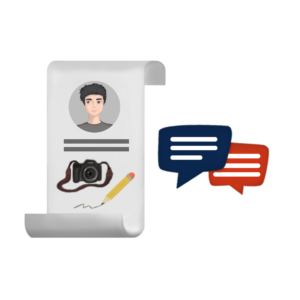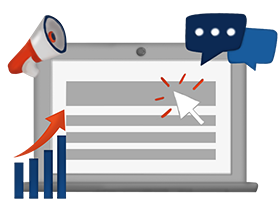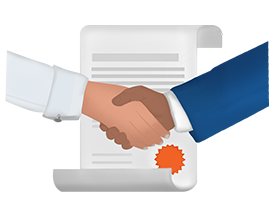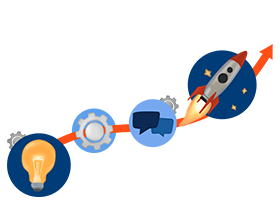Buyer Persona management and development to help you adore your customers.
FYI

What is a Persona?
A persona is a way of representing complex customer and market data in a way that a human can actually understand and use. Think of a persona as a fictional character or and archetype. Personas have various more specific names that refer to how the persona is used for a specific business purpose. Marketing teams may refer to a Buyer or Customer Persona. Sales teams sometimes call them Prospect Personas. Product development teams may refer to a User Persona. In all cases, market and/or customer data is used to identify the ideal characteristics of the people (personas) your company serves. Usually elements like demographics, psycho-graphics and decision criteria are identified and included. At their best, personas are dynamic entities who are updated as your understanding of your customers improves.
A persona has all the elements of a “real” person who buys or uses your product or service. This includes elements of a life story and personal motivations. This helps everyone in your organization relate to your persona in a personal, connected way. Negative personas are an incredibly useful and underutilized business tool. Non-buyers who waste your sales and marketing teams efforts can be identified and eliminated from your sales cycle early. Your product development team can use negative personas to help them make it more difficult for “problem users” to misuse your product.
Here at Persona fx, we believe that specificity is an essential characteristic of your persona. Other organizations may encourage you to use ranges when describing your persona’s age, income or level of responsibility. We think that’s a mistake. The whole purpose of a persona is to help your team relate to your prospects and customers as individuals. And individuals do not have a range of ages. We’ve also discovered that when we are specific, we often uncover specific decision criteria that would have been less obvious if we were looking at a group in aggregate.
For example, our 32 year old founder has different preferences for communication and makes buying decisions differently than our 48 year old, even though they share many other characteristics. Personas with different responsibilities can often find value in your product, even as they use it differently.
How is a Persona different from a Market Segment?
A market segment describes a group of people in your market while a Persona distills the essentials of a market segment into just one person. While a market segment is described generally, a Persona is specific. It’s the difference between “23-27 year old women with degrees in computer science” and your sister, Jessica or your fiance, Ashley.

What difference can Persona fx’s Personas make in my business?
One of the most common mistakes businesses make is confusing our customers with ourselves, confusing our preferences, pain points and goals with those of our prospects, customers or users.
Persona fx personas uniquely engage your entire team in persona development so everyone can understand and develop empathy for the individuals your business wants to serve. This enables them to make intuitive connections that often aren’t obvious in data points.
Personas used for different purposes emphasize different elements. Your product development team may be more interested in a persona’s goals and online preferences and behaviors. Your marketing team may be more concerned with where and when to deliver content and your sales team will want most to know how to motivate a prospect to make a buying decision. But everyone in your organization should at least know what your ideal customers want and what beliefs are associated with their desires.
Personas also help your team by limiting the potential variables they have to consider, while highlighting the important ones.
Using personas, copy writers create more compelling marketing messages. Social media managers make more useful connections. Sales associates have more effective meetings. Developers integrate more valuable capabilities. And because everyone is clear about who is being served, a virtuous cycle is created, making it easier to attract and serve more customers who are ideal for your business.
For this reason, Persona fx recommends that your entire team contributes to the persona development process. This enables you to access the combined wisdom of various specialists and develop personas who are dimensional and engender real empathy. This helps your entire organization relate personally to your prospects and customers and bond in common purpose. It also creates a language that eases communication between your various business teams.
A quick google search reveals that applications from Hubspot to Salesforce to GitLab all recommend that you use personas. Why? Simple.
Personas make their applications more effective – making them more successful at helping you grow your business.

How do Personas make my Marketing team more effective?
It’s much easier to write compelling messages for someone you know and understand. It’s also more obvious what information to include and what to leave out.
To get a sense of this, think for a moment of how you might describe yesterday to different people in your life. What would you tell your Mom vs your brother? What would you tell your girlfriend vs one of your buddies? How would you describe yesterday if both your best friend and your Grandmother were your “audience.”
Your copywriters have to write different types of copy for different situations. You may need copy that appeals to your entire market on the home page of your website. A blog post may be created to educate a specific market segment while not alienating others, decreasing bounce rates. A banner ad or long form sales page will perform best if it speaks to the specific pain points of one market segment. All of this is simplified by using effective Personas.
Personas help your marketing team make specific decisions about when, where and how often to publish content, what details to include, what voice to use and what mix of media will be most effective.
And they help you personalize your marketing messages which increases their effectiveness. A recent study by Hubspot found that personalized calls to action performed more than 3X better than generic ones. Think about that. Same product. 3X conversion. Just because you care enough to know your prospects and customers. And put that knowledge into action inside your business.

How do Personas make my Sales team more effective?
Most of us appreciate a person who makes the effort to get to know us before trying to solve our problems. Personas help your sales team know your prospects even before they start a sales conversion, helping them identify good prospects naturally, conversationally and confidently. When a sales person is relaxed and comfortable, the buyer can move more easily through the sales experience.
While personas can’t replace sales discovery, they create a meaningful shortcut for your sales team, helping them anticipate pain points, values, objections and communication style and preferences.
Personas can help your sales team member qualify leads, determining if the person they are talking to is an actual prospect or just a suspect who will consume time and resources, but is unlikely ever to buy your product. By understanding your company’s personas, your sales team can also zone in on your prospects unique pain points and know how to respond to them ahead of time. They can also anticipate customer concerns or objections and respond knowledgeably and personally, because their knowledge of your personas helps them anticipate these concerns so they can comfortably prepare – ahead of time.
Personas help your sales team create a truly personalized buying experience for your prospects. For start-ups and other less recognized brands this can make a real difference in sales conversions. A recent Salesforce survey of over 7,000 customers revealed that while 59% of buyers considered a brands reputation when making a purchase, 58% said that a personalized buying experience was an important factor in their buying decision. This creates a real opportunity for new brands to differentiate themselves by investing in personalizing their buyer’s experience.

How do Personas make my Product Development more effective?
Product development is fundamentally a creative process and personas can be leveraged through out that process to make it’s output more valuable to your best customers. Utilized from the beginning, personas can keep your entire development team clear about who the product is for, how it will be used and why it matters.
At the same time personas create a useful shorthand that can be used throughout the development process. We need to prioritize this feature because “Ashley” needs it – and she represents our most important user segment.
Personas help your development team unite around a common product vision and also serve to keep the team on course while limiting interesting digressions down rabbit holes. With thousands of choices to be made in the course of a product release, every designer, writer and developer has another tool to use to make the right decision, liberating your product manager. And when your testers embody a persona while they kick the tires, they are more likely to identify real issues that will impact your user’s experience.
Because product teams are composed of people with intellectual curiosity, it’s all too common for them to pursue ideas that end up expensive solutions in search of problems. This can be compounded by another common mistake – confusing ourselves with our customers. Personas help your product team steer clear of both of these pitfalls by establishing a clear touchstone and can be referred by any team member at any time.
Most products are not monolithic. They have many different users who may use the product in significantly different ways. Personas can help your product manager determine if adding a few features will create a more useful experience or if a completely separate user experience is required, avoiding the patchwork experience that can result if user priorities can’t be easily evaluated and considered.
Because your team can’t create everything for everyone right now, personas can help them prioritize what’s important now. To avoid trying to please everyone and end up not pleasing anyone, it’s often useful to focus on just one persona for a release. If you’ve decided that you’re developing this release for “Jessica” then a feature that’s important for her gets included, a feature that “Ashley” is hoping for waits. “Jessica” is delighted. “Ashley” can be the priority next time.
Finally, negative (sometimes called A-hole) personas can help your development team deal with unwelcome users, minimizing their impact on the experience of others or on your business. If you are creating a product that becomes more valuable with more social interaction, how do you keep trolls from poisoning the well? Forgetting to consider how to manage possible problem users can make your product much less valuable to everyone.
Achieve more with Persona fx
Tap the combined customer knowledge in your entire organization and easily create engaging and accurate Buyer Personas that work for you, increasing sales conversions and stick rates.
